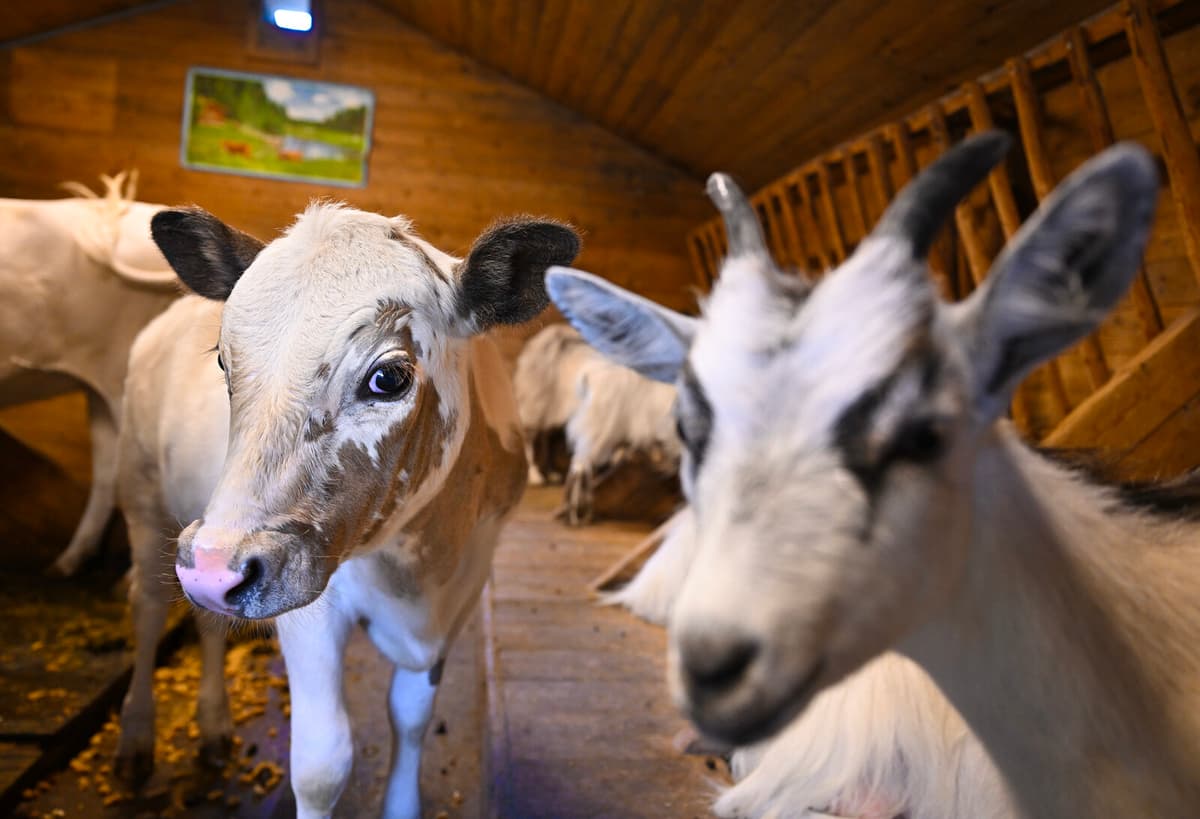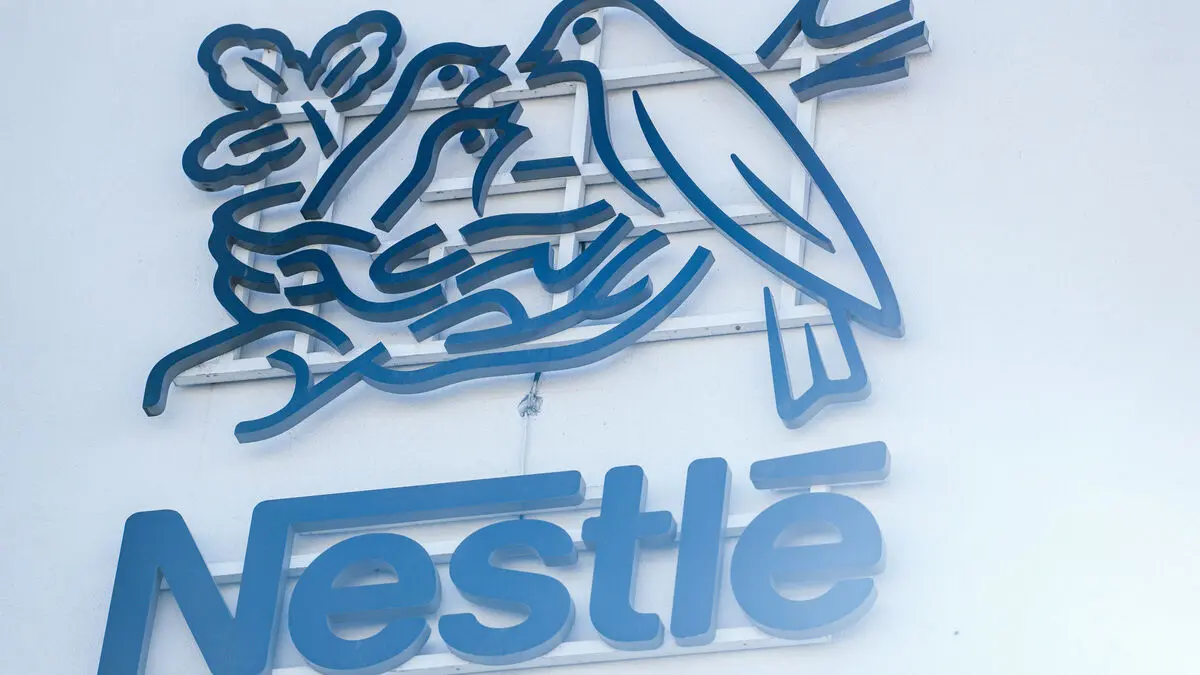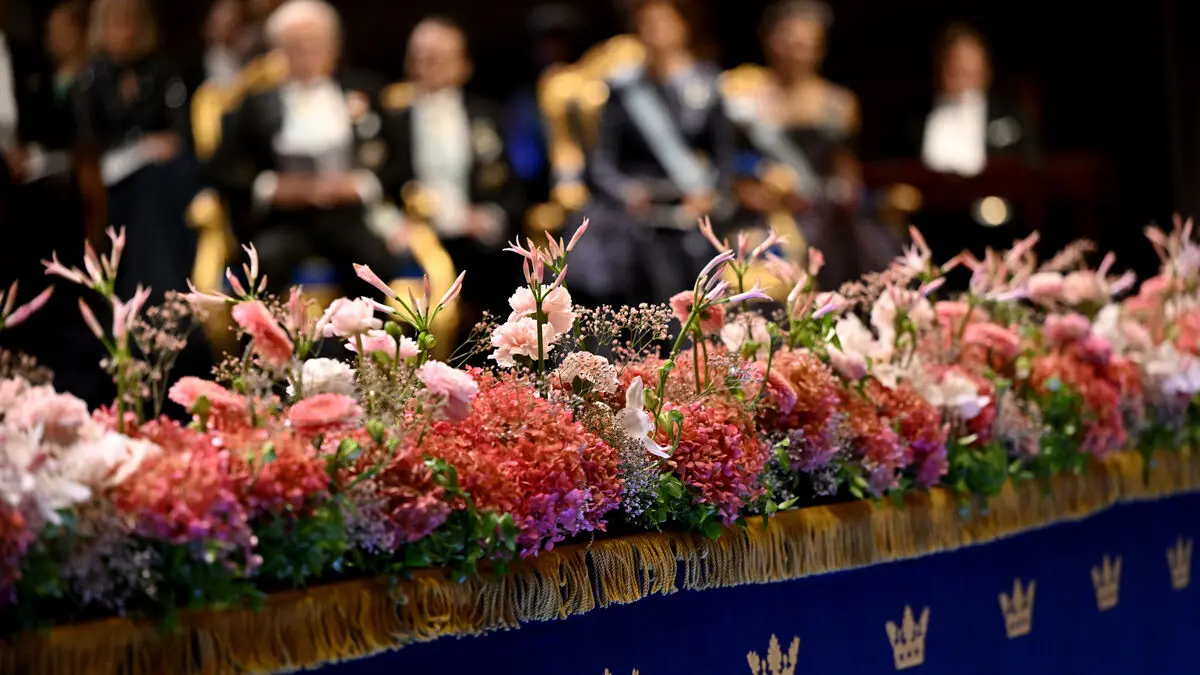A strong lowing gets both humans and sparrows inside the barn to react. One of the two cows of the breed Swedish Lowland cattle, or SLB-cows, doesn't want to be quiet. Right next to it stands a three-week-old calf.
This cow gives around ten liters of milk per day, in addition to what the calf drinks. Modern breeds can milk around 60 liters, it's almost a bit uncomfortable, says Martin Hammarsten, zoo educator at Skansen in Stockholm.
He is one of those who work with the different native breeds that exist in the park. In addition to SLB-cows, there are, among others, mountain cattle, Jämtland cattle, Scanian goose, Swedish yellow duck, Öland dwarf hen, and Linderöd pig.
Close to their mothers
The black-and-white calf, which is on one of its first visits to the pasture, frolics happily around. The adult cows make some attempts to keep up but quickly get distracted. Here at Skansen, they have tried to recreate environments that remind of those where the different native breeds lived earlier. An important part of this is to let calves, piglets, and kids be close to their mothers for the first time.
But there is, of course, a limit to how many animals we can have here. Partly due to the space, but also for genetic variation. We have to remove male animals so they don't mate with their relatives, for example, says Martin Hammarsten.
Native breeds are populations of animals that have lived so long in the same area that they have adapted to the local environment and its specific conditions.
Produce more
They differ from today's commercial animals mainly because they are not so highly specialized. The change came during the first half of the 20th century when people wanted animals that could produce more. Through breeding, they got either beef cattle or dairy cows. Hens that either laid many eggs or provided meat. Feed and animal husbandry are adapted to what is required to optimize the final product.
Sweden, like many other countries, has therefore committed to protecting native breeds. According to Anna Johansson at SLU, there are two reasons why we should preserve native breeds.
One is cultural-historical. These animals are part of our cultural heritage and are important for us to understand how our society has developed and how we have survived, she says.
The other concerns the future.
Native breeds may have genetic variants that can become important when the climate and environment change. It's always good to have a large genetic variation, and they may have properties that will be needed in 100 years.
It can be about viruses and bacteria that affect modern animals and can, in the worst case, wipe out large parts of livestock. Some native breeds can, for example, utilize feed that grows during drought.
We talk a lot about the risks of being dependent on imported goods. Many of the old native breeds are smaller than regular production animals and require less feed. They can manage on land that is not so fertile and still give us meat and milk, says Anna Johansson.
Turn grass into food
Sweden has, as a country, taken on the responsibility to preserve threatened native breeds as part of the UN's Convention on Biological Diversity. The Swedish Board of Agriculture also provides support to native breed associations that function as knowledge banks for the different native breeds and contribute to organizing the preservation work.
It's the animal owners and associations that do the job, and they are incredibly important for preserving native breeds, says Stephanie Kindbom at the agricultural development unit at the Swedish Board of Agriculture.
According to nutritional recommendations, we should reduce our intake of meat, but the fact is that some of the native breeds are very good at making food out of crops that we can't eat, for example, bark.
Ducks, sheep, and goats are very suitable for eating grass. Humans can't eat it, but we can eat eggs, milk, and meat that the animals provide, says Anna Johansson.
At Skansen, the spotted Linderöd piglets are rooting around in the mud. That Martin Hammarsten likes them is beyond doubt.
They're very good at taking care of their young and are phenomenal at finding their own food. They're top-notch animals, simply.
In 2021, there were, according to the UN's Food and Agriculture Organization (FAO), 8,771 documented domestic animal breeds in the world.
7,745 of the domestic animal breeds are classified as local breeds, which means they only exist in one country. A total of 594 local domestic animal breeds have become extinct.
The FAO finds it deeply worrying that biodiversity within food and agricultural production systems is decreasing in many countries.
The threats to biodiversity are many, including climate change, environmental degradation, increased population, changed consumption patterns, and the use of few, highly bred breeds.
Sweden, together with many other countries, has taken on the responsibility to protect its domestic animal breeds. The Convention on Biological Diversity, which includes the breeds, was signed by Sweden at the UN's international conference on environment and development in 1993.
Sweden has 72 native breeds for which we have preservation responsibility.
The Swedish Board of Agriculture has been paying out compensation for domestic animal breeds since 1995. Animal owners of pigs, poultry, sheep, goats, and cattle can receive support. Indirect support through associations goes to the preservation of, among others, rabbits, bees, and horses.
Sources: Swedish Board of Agriculture, FAO





